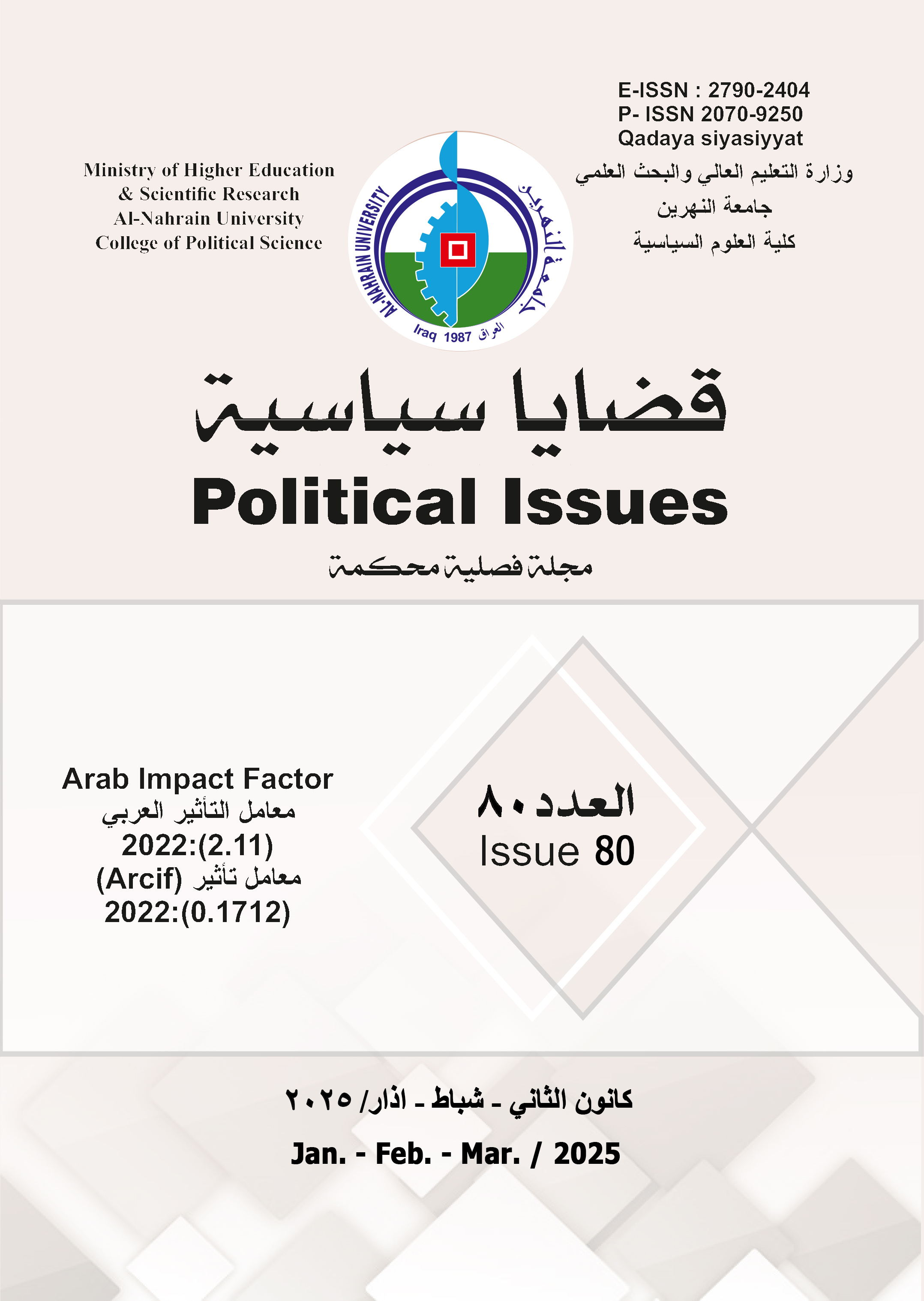East Asia in American Geostrategic Orientations
DOI:
https://doi.org/10.58298/802025723Keywords:
East Asia, Geostrategy, China, United StatesAbstract
The 21st century brought significant shifts in American strategic orientations, as Asia, particularly its eastern region, emerged as the new focus of U.S. geostrategy. Previously, Europe had been the primary point of interest following World War II, after which the Middle East, with its complexities and major interactions, took center stage in American strategic concerns. The primary reason for this shift was the rise of a new competitor seeking regional expansion—China.
References
Asmaa Bahi and Reda Chawadra, "The US Strategic Orientation Towards Southeast Asia and Efforts to Contain China 2009-2020," International Journal of Legal and Political Research, Issue 1 (Algeria: 2022).
Amina Falah, "The New US Security Strategy in Southeast Asia: From a Policy of Ignorance to a Policy of Rebalancing," Asian Issues Journal, Issue 2 (Berlin: 2019).
Anatoly Utkin, American Strategy for the Twenty-First Century, translated by Anwar Muhammad Ibrahim and Muhammad Nasr al-Din (Cairo: National Translation Project, 2003).
Tariq Aziza, US Strategy in Asia in Light of the Chinese Rise (Doha: Harmoon Center for Contemporary Studies, 2017).
Liu Shih-Cheng and Li Shi-Dong, China and the United States: Rivals or Partners?, translated by Abdel Aziz Hamdi Abdel Aziz (Cairo: Supreme Council of Culture, 2003).
Liu Xie Cheng and Li Shidong, China and the United States: Rivals or Partners? (Cairo: Supreme Council of Culture, 2003).
Muntaha Talib Salman, A Brief History of Modern and Contemporary Asia (Baghdad: Dijlah Library, 2014).
Michal Herdberg, "The Triangle of Strategic Energy Interests: China, India, and the United States: The American Perspective," in China, India, and the United States: The Competition for Energy Resources, ed. (Abu Dhabi: Emirates Center for Strategic Research and Studies, 2008).
Noah Feldman, The Quiet War, translated by Hisham Samir (Al-Khobar: Tكوين for Studies and Research, 2016).
Henry Kissinger, Years of Renewal, translated by Hisham Al-Dajani (Riyadh: Obeikan Library, 2009).
Yahya Saeed Qaoud and Ala Amer Al-Jaab, “The 2017 US National Security Document: An Analytical Reading of Donald Trump’s Strategy,” Strategic Readings, Issue 20 (Ramallah: 2018).
Additional Files
Published
Issue
Section
License
Copyright (c) 2025 علي حسين حميد، وليد جرجيس إسعيد

This work is licensed under a Creative Commons Attribution 4.0 International License.
This is an Open Access article distributed under the terms of the creative commons attribution (CC BY) 4.0 international license which permits unrestricted use, distribution, and reproduction in any medium or format, and to alter, transform, or build upon the material, including for commercial use, providing the original author is credited.






